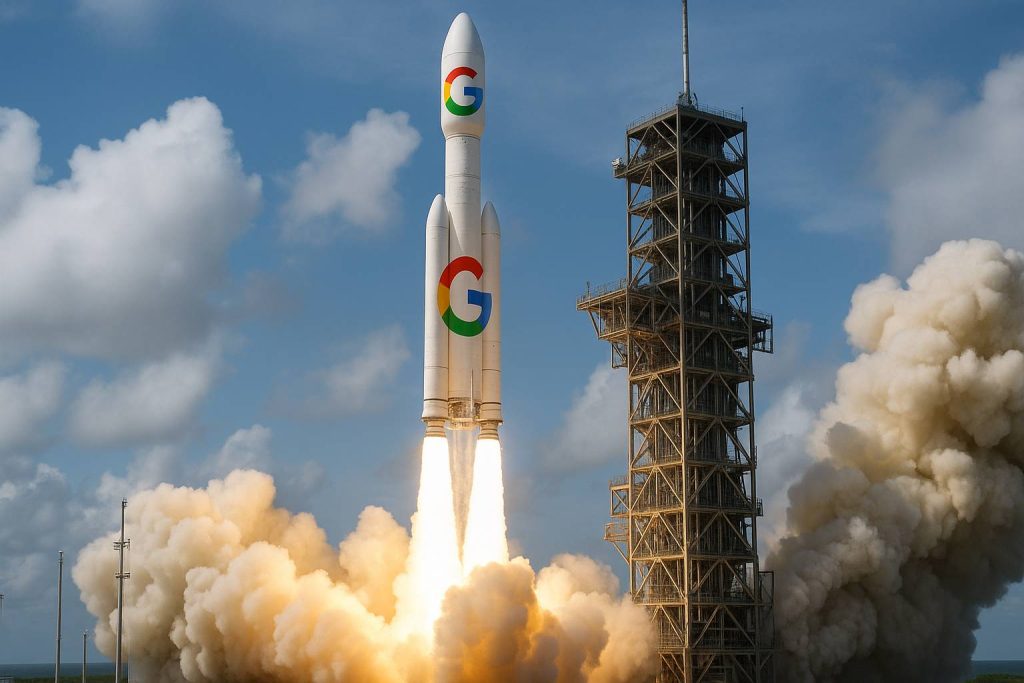AI Sector Concentration: How Nvidia’s OpenAI Investment Shapes Market Risks
Nvidia ($NVDA) reinforced artificial intelligence’s potentially bloated dominance in equity markets on Monday, September 22nd, when the company announced its strategic partnership with OpenAI, featuring a $100 billion investment commitment tied to deploying 10 gigawatts of AI data center infrastructure. The unprecedented investment, which CEO Jensen Huang described as “the biggest AI infrastructure project in history,” demonstrated how AI and data center investments continue driving stock market performance while simultaneously highlighting concentration risks that sophisticated investors address through alternative asset diversification strategies.
The strategic alliance between Nvidia and OpenAI showcased the continued market dominance of artificial intelligence infrastructure investments, with AI-related companies representing an increasingly large portion of total market capitalization and investment returns. This trend reinforces why prudent investors require portfolio diversification that includes assets uncorrelated with AI sector performance, providing stability during potential technology sector corrections while maintaining exposure to long-term growth trends.
This Article Covers:
- How Nvidia’s $100 billion OpenAI partnership could demonstrate AI sector market concentration
- Why artificial intelligence infrastructure continues driving equity market performance
- The concentration risks created by AI sector dominance in investment portfolios
- How collector car investments provide diversification from technology sector volatility
- Why MCQ Markets offers institutional access to assets uncorrelated with AI market performance
Nvidia OpenAI Partnership: AI Infrastructure Market Dominance and Investment Implications
The investment structure demonstrated the scale of capital allocation toward AI infrastructure projects, with the first gigawatt deployment scheduled for the second half of 2026 on Nvidia’s Vera Rubin platform. CEO Jensen Huang characterized the initiative as creating the foundation for artificial general intelligence development, emphasizing how data center investments continue attracting unprecedented capital commitments from technology industry leaders.
Market analysts noted the announcement’s reinforcement of Nvidia’s market position, with the company having achieved the historic milestone of becoming the first publicly traded company to reach a $4 trillion market capitalization in July 2025. Following blockbuster Q2 earnings, NVDA shares maintained their upward trajectory, trading at $177.82 with nearly 30% year-to-date gains, demonstrating sustained investor confidence in AI infrastructure as the primary equity market growth driver.
The partnership’s scale highlighted how artificial intelligence investments increasingly dominate technology sector capital allocation decisions. The $100 billion commitment represents one of the largest single technology infrastructure investments announced in 2025, illustrating how AI data center development requires capital commitments that dwarf traditional technology sector investments and create substantial market concentration risks.
AI Sector Market Concentration: Portfolio Risk Management for Technology-Heavy Investors
AI sector market concentration has reached unprecedented levels across multiple metrics.The “Magnificent Seven” technology stocks, including Nvidia, Microsoft, Apple, and others, account for 34% of the S&P 500 as of mid-May 2025, with artificial intelligence infrastructure companies driving the majority of this concentration. This market dominance creates portfolio risks for investors whose returns depend heavily on continued AI sector outperformance.
The concentration pattern extends beyond individual stock performance into broader economic dependencies. Data center construction, semiconductor manufacturing, and cloud computing infrastructure represent interconnected sectors that collectively influence market performance through supply chain relationships and capital allocation patterns. When Nvidia announces major partnerships or investment commitments, the market impact extends across multiple technology subsectors simultaneously.
The implications for sophisticated investors are significant. While AI infrastructure investments have generated substantial returns, the sector’s market dominance creates portfolio challenges that become more pronounced as technology allocation percentages increase. According to T. Rowe Price, when any single holding exceeds 10% of a portfolio, “it represents a greater risk that requires more immediate planning,” and sector concentration creates similar systematic risk exposure requiring alternative asset allocation strategies that operate independently of AI-driven tech sector performance.
Investment advisors increasingly recommend alternative asset allocation approaches that reduce correlation with technology sector performance, particularly for clients whose existing wealth derives from AI and data center infrastructure investments. The collector car market represents one such alternative, offering appreciation potential completely divorced from semiconductor manufacturing capacity, data center construction timelines, or artificial intelligence model development cycles.
Alternative Investment Strategy: Collector Cars During AI Market Concentration Periods
The extreme market concentration demonstrated by Nvidia’s $100 billion OpenAI commitment reinforces why sophisticated investors seek asset classes that operate independently of artificial intelligence sector dynamics. Collector cars have emerged as a preferred alternative investment category, offering several advantages during periods when AI infrastructure investments experience dramatic valuation swings and technology sector concentration creates systematic portfolio risks.
Investment-grade collector automobiles provide critical portfolio benefits during AI sector concentration:
Market Independence: Collector car values appreciate based on automotive heritage, production scarcity, and historical significance rather than data center deployment timelines, AI model development progress, or semiconductor manufacturing capacity that drives technology stock valuations and creates concentration risks.
Technology Sector Isolation: Physical automotive assets maintain tangible value regardless of artificial intelligence infrastructure investment cycles, GPU manufacturing constraints, or data center real estate availability that affects AI sector performance and creates portfolio concentration concerns.
Correlation Benefits: Classic Ferrari, Lamborghini, and McLaren appreciation operates completely independently of Silicon Valley market dynamics, providing genuine portfolio diversification during periods when AI sector concentration creates systematic risk exposure across multiple technology subsectors.
Inflation Protection: Rare automobiles historically preserve purchasing power during periods of monetary expansion and fiscal uncertainty that often accompany major technology sector corrections and artificial intelligence investment cycle adjustments.
The collector car market’s performance during previous technology concentration periods validates this diversification strategy. During the 2000 dot-com crash, when technology stocks declined an average of 78% and sector concentration created widespread portfolio losses, investment-grade collector cars maintained their values based on fundamental scarcity and automotive heritage factors unrelated to technology sector performance.
According to Knight Frank’s luxury investment index, collector cars generated 185% overall appreciation over the past decade, significantly outpacing traditional asset classes while demonstrating consistent appreciation independent of AI infrastructure investment cycles or data center market dynamics.
MCQ Markets: Institutional Access to AI-Independent Alternative Assets
While Nvidia investors navigate AI sector concentration risks and data center infrastructure investment volatility, MCQ Markets provides sophisticated investors with access to collector car investments that appreciate completely independent of artificial intelligence sector performance or semiconductor industry dynamics. Our fractional ownership platform focuses on investment-grade automobiles whose values derive from automotive craftsmanship, racing heritage, and production scarcity rather than technology sector metrics that create portfolio concentration risks.
The collector car market’s independence from AI infrastructure investments makes it particularly valuable for investors seeking portfolio diversification during technology sector concentration periods. While artificial intelligence companies experience valuation swings based on data center deployment progress and GPU availability, investment-grade collector cars continue appreciating based on factors completely divorced from Silicon Valley market dynamics. MCQ Markets provides technology investors with:
AI-Independent Assets: Collector car values remain unaffected by Nvidia partnership announcements, OpenAI investment commitments, or data center infrastructure development that drives technology sector volatility and creates portfolio concentration risks.
Professional Asset Curation: Expert vehicle sourcing, authentication, and maintenance services that operate independently of semiconductor industry performance or artificial intelligence development cycles that influence technology sector investments.
Portfolio Diversification:Zero correlation with AI sector performance, data center real estate values, or GPU manufacturing capacity that creates concentrated exposure to technology sector systematic risks.
Accessible Investment Structure: Fractional ownership opportunities allowing participation in blue-chip collector cars starting at institutional minimums, providing alternative asset exposure without requiring full vehicle acquisition capital commitments.
Our carefully curated portfolio includes vehicles like the ultra-rare 2012 Lexus LFA, representing one of only 500 manufactured examples with documented provenance and racing heritage, and classic Lamborghini Countach models that have demonstrated steady appreciation completely independent of Nvidia’s business strategy, AI infrastructure development timelines, or data center investment cycles.
The platform’s focus on investment-grade automobiles with established market recognition ensures that portfolio appreciation derives from automotive excellence and scarcity rather than technology sector dynamics that influence AI infrastructure investments and create portfolio concentration concerns for technology-focused investors.
Investment Outlook: Navigating AI Sector Concentration Through Alternative Asset Allocation
Nvidia’s announcement of its $100 billion OpenAI investment commitment, characterized as the largest AI infrastructure project in history, creates valuable insights for investors managing portfolio concentration risks in technology and artificial intelligence sectors. The partnership’s scale and market impact demonstrate why building resilient portfolios requires assets that maintain value regardless of AI sector performance or data center infrastructure investment cycles.
This AI sector concentration reinforces fundamental investment principles about diversification and systematic risk management. When individual technology partnerships can create billion-dollar market cap changes within single trading sessions, the importance of uncorrelated asset classes becomes paramount for portfolio stability and long-term wealth preservation strategies.
The Nvidia-OpenAI partnership affected valuations across the AI infrastructure market, demonstrating how artificial intelligence sector investments create broad-based impacts that extend beyond individual companies to entire technology subsectors. This systematic risk highlights the importance of alternative asset allocation that operates independently of semiconductor manufacturing, data center construction, and AI model development cycles.
MCQ Markets addresses this diversification need by providing institutional-quality access to collector car investments through our proven fractional ownership platform. Our investment structure allows technology-focused investors to participate in this stable asset class while maintaining professional management and portfolio liquidity during AI sector volatility periods.
As Nvidia continues expanding AI infrastructure partnerships and artificial intelligence companies maintain their dominant market positions, collector car investments continue operating in markets driven by automotive craftsmanship and scarcity rather than technology sector dynamics. This fundamental independence makes investment-grade automobiles particularly valuable for investors seeking portfolio stability during periods of AI sector concentration and technology market systematic risk exposure.





